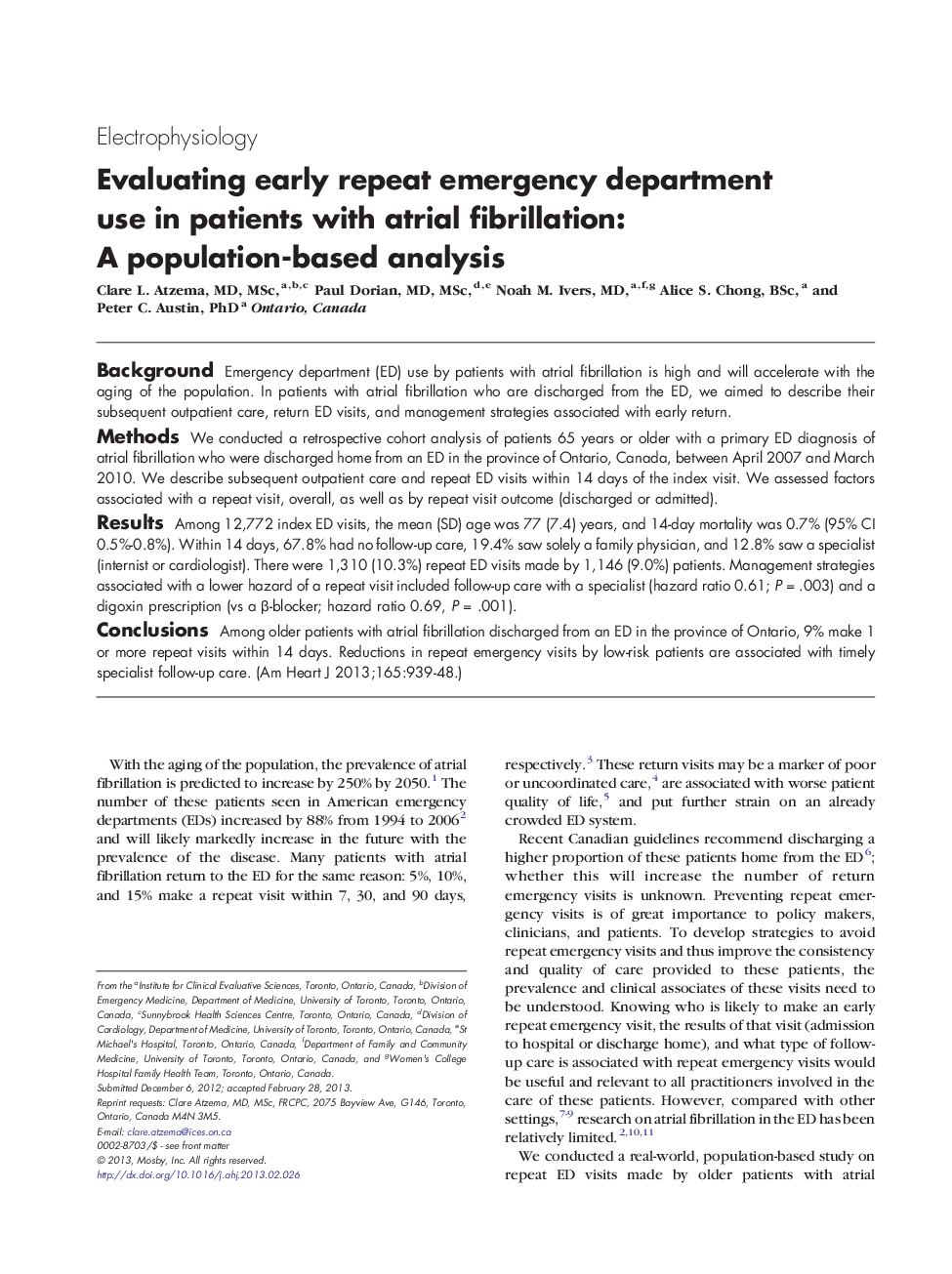| Article ID | Journal | Published Year | Pages | File Type |
|---|---|---|---|---|
| 2849402 | American Heart Journal | 2013 | 10 Pages |
BackgroundEmergency department (ED) use by patients with atrial fibrillation is high and will accelerate with the aging of the population. In patients with atrial fibrillation who are discharged from the ED, we aimed to describe their subsequent outpatient care, return ED visits, and management strategies associated with early return.MethodsWe conducted a retrospective cohort analysis of patients 65 years or older with a primary ED diagnosis of atrial fibrillation who were discharged home from an ED in the province of Ontario, Canada, between April 2007 and March 2010. We describe subsequent outpatient care and repeat ED visits within 14 days of the index visit. We assessed factors associated with a repeat visit, overall, as well as by repeat visit outcome (discharged or admitted).ResultsAmong 12,772 index ED visits, the mean (SD) age was 77 (7.4) years, and 14-day mortality was 0.7% (95% CI 0.5%-0.8%). Within 14 days, 67.8% had no follow-up care, 19.4% saw solely a family physician, and 12.8% saw a specialist (internist or cardiologist). There were 1,310 (10.3%) repeat ED visits made by 1,146 (9.0%) patients. Management strategies associated with a lower hazard of a repeat visit included follow-up care with a specialist (hazard ratio 0.61; P = .003) and a digoxin prescription (vs a β-blocker; hazard ratio 0.69, P = .001).ConclusionsAmong older patients with atrial fibrillation discharged from an ED in the province of Ontario, 9% make 1 or more repeat visits within 14 days. Reductions in repeat emergency visits by low-risk patients are associated with timely specialist follow-up care.
